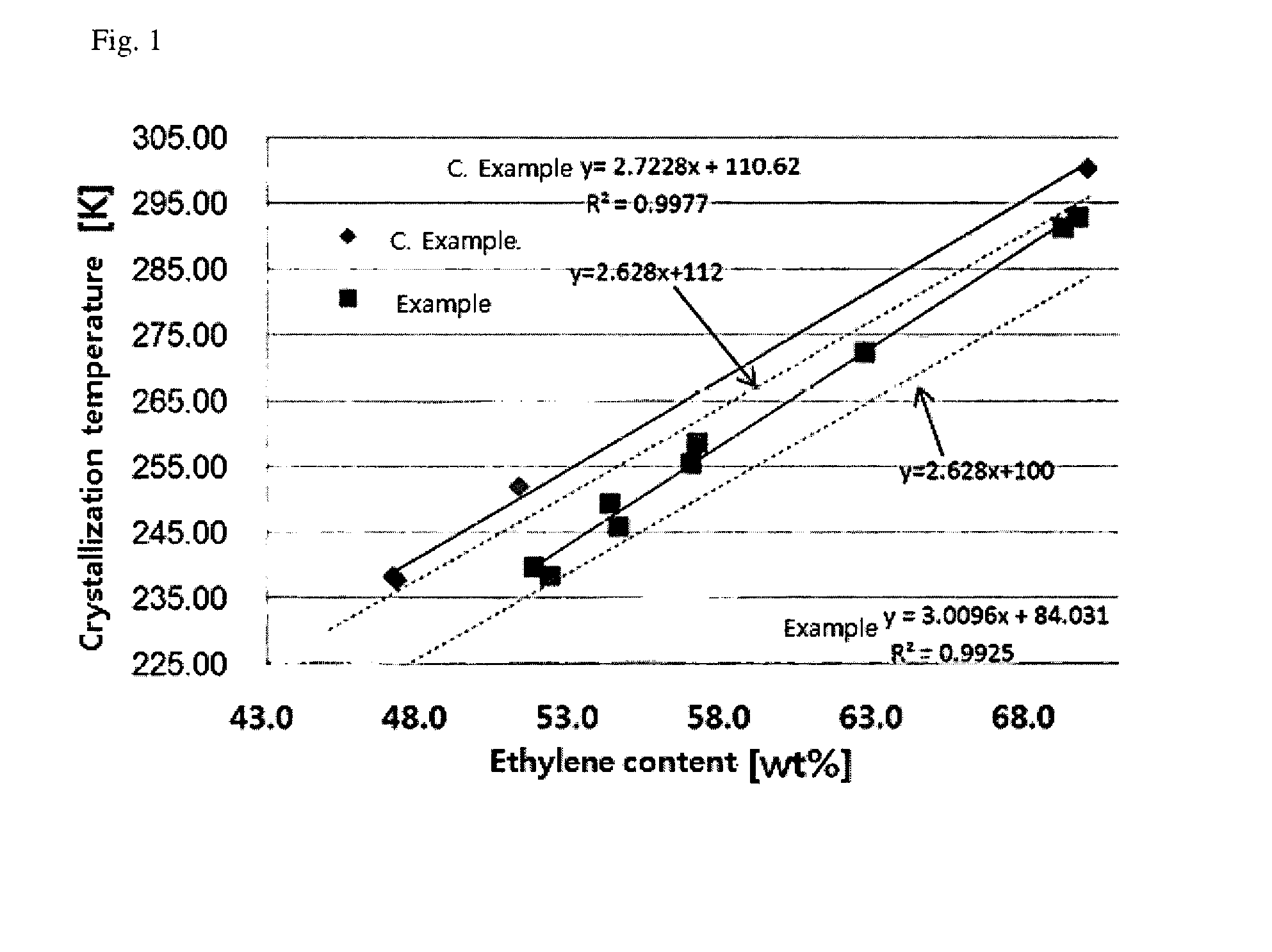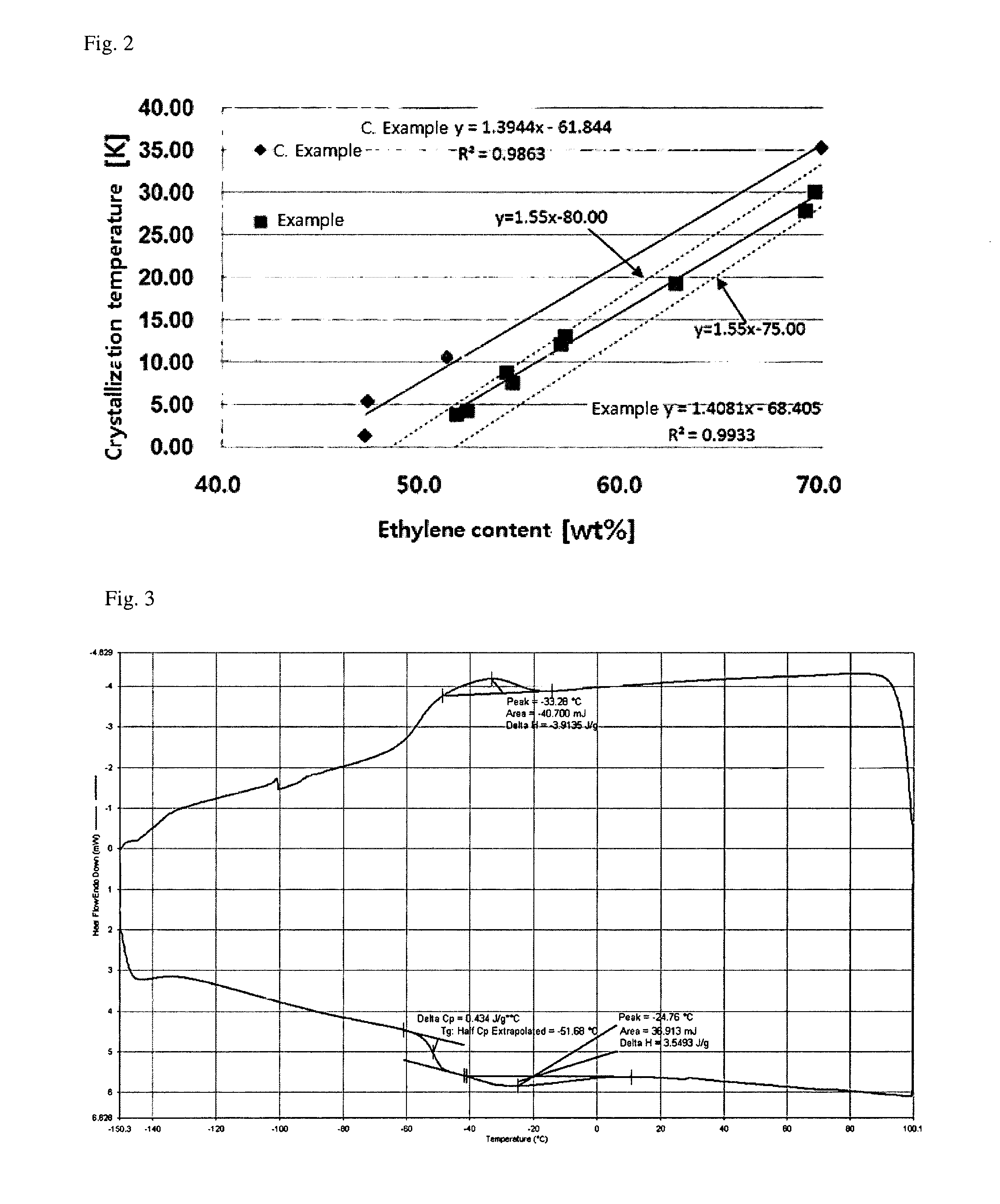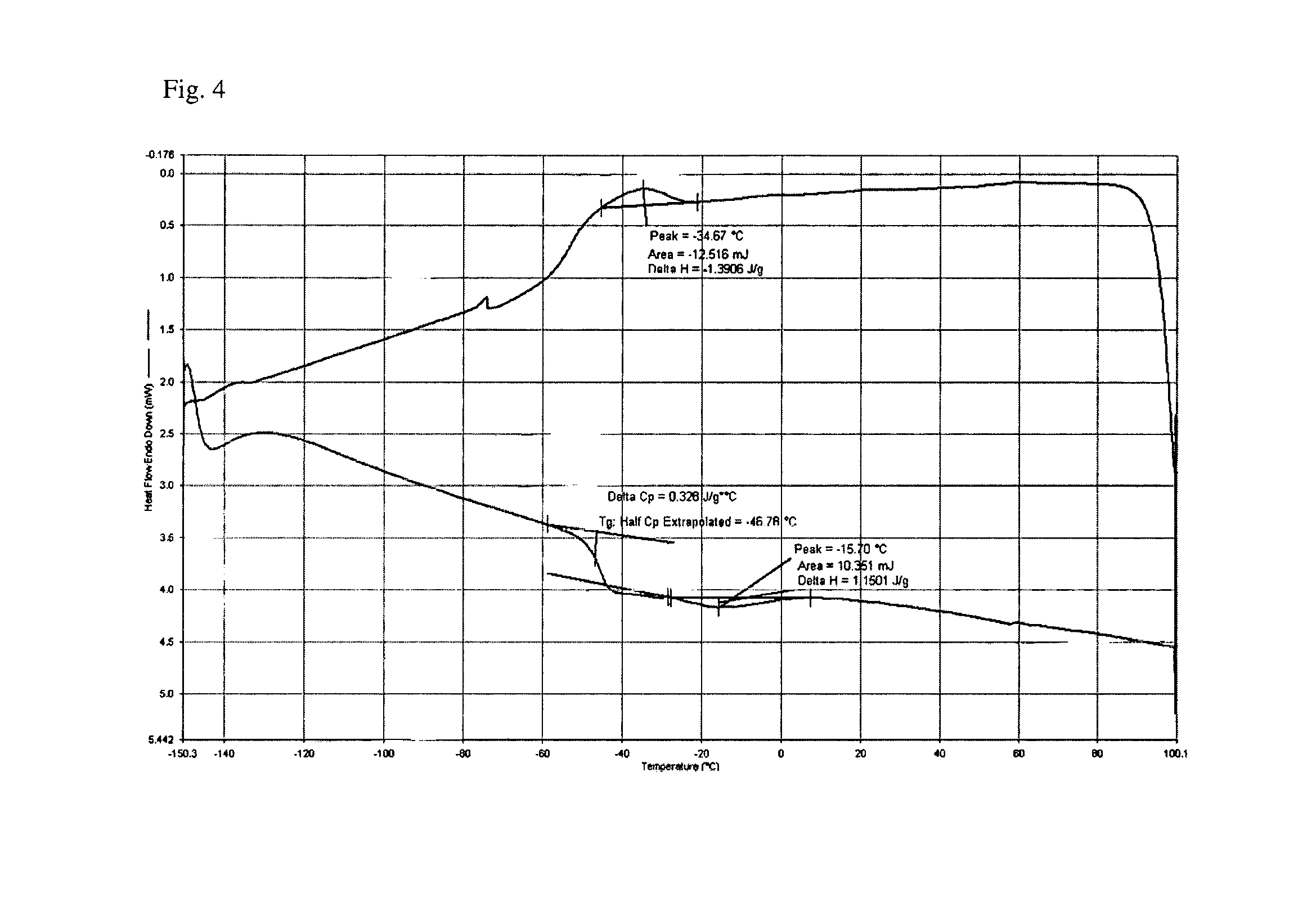Elastic diene terpolymer and preparation method thereof
a technology of elastic diene and terpolymer, which is applied in the field of elastic diene terpolymer and its preparation, can solve the problems of increasing the content of metal remaining in the copolymer, affecting the vulcanization process, so as to improve elasticity and flexibility, improve the elasticity and the effect of flexibility
- Summary
- Abstract
- Description
- Claims
- Application Information
AI Technical Summary
Benefits of technology
Problems solved by technology
Method used
Image
Examples
examples 1 to 9
Preparation of Elastic Terpolymer of Ethylene, Propylene, and 5-ethylidene-2-norbornene
[0097]Terpolymerization of ethylene, propylene, and 5-ethylidene-2-norbornene was continuously performed using a 2 L-pressure reactor. Hexane as a polymerization solvent was continuously fed to the bottom of the reactor at a feed rate of 7.6 kg per hour, and the polymerization solution was continuously discharged from the top of the reactor.
[0098]As the first and second transition metal compounds, the above-described [(1,2,3,4-tetrahydroquinolin-8-yl)tetramethylcyclopentadienyl-eta5,kapa-N]titanium dimethyl and [(2-methylindolin 7 yl)tetramethylcyclopentadienyl-eta5,kapa-N]titanium dimethyl dissolved in hexane were used, and fed to the reactor at a rate of 51 to 54 μmol per hour. Further, as the co-catalytic compound, the above-described N,N-dimethylanilinium tetrakis(pentafluorophenyl)borate dissolved in toluene was used, and fed to the reactor at a rate of 255 to 270 μmol per hour. Further, as t...
experimental example 1
Measurement of Crystallization Temperature and Enthalpy, and Derivation of Relationship Between Ethylene Content and Crystallization Temperature or Crystallization Enthalpy
[0105]DSC curve data of the copolymers of the examples and comparative examples was obtained using a DSC instrument of PerkinElmer DSC 6000. More specifically, DSC analysis was performed while heating each copolymer sample from approximately 0° C. to approximately 100° C. at a rate of approximately 20° C. / min, maintaining it at approximately 100° C. for approximately 2 min, and then cooling it to approximately −150° C. at a rate of approximately −10° C. / min. The obtained DSC curve data of Example 2 and Comparative Example 1 are shown as in FIGS. 3 and 4.
[0106]Crystallization temperature (Tc; K) and crystallization enthalpy (ΔHc; J / g) of each copolymer were calculated from the DSC curve data, and are summarized in the following Table 2.
[0107](1) Data for each copolymer is presented by plotting the content of ethyle...
experimental example 2
Measurement of Re*Rc
[0109]Each copolymer of the examples and comparative examples was analyzed by 13C-NMR to obtain a growth reaction rate constant of k11, k12, k21, or k22. In this regard, a 600 MHz Bruker DRX 600 instrument was used for measurement, and each copolymer dissolved in ortho-dichlorobenzene-d4 solution was analyzed at 100° C.
[0110]Each growth reaction rate constant can be obtained from the results of 13C-NMR analysis by Triad Sequence analysis according to the Randall method [Journal of Polymer Science: Polymer Physics edition, 1973, 11, 275˜287] and the Kakugo method [Macromolecules 1982, 15, 1150]. Based on the equations of Re=k11 / k12 and Rc=k22 / k21, the Re*Rc value was calculated.
[0111]The Re*Rc value of each copolymer is also shown in the following Table 2.
[0112]
TABLE 2Content ofCrystallizationCrystallizationethylenetemperatureenthalpywt %KJ / gRe * RcExample 151.7239.873.910.650Example 252.2238.404.360.803Example 354.2249.448.820.848Example 454.5245.897.650.563Examp...
PUM
| Property | Measurement | Unit |
|---|---|---|
| density | aaaaa | aaaaa |
| molecular weight distribution | aaaaa | aaaaa |
| temperature | aaaaa | aaaaa |
Abstract
Description
Claims
Application Information
 Login to View More
Login to View More - R&D Engineer
- R&D Manager
- IP Professional
- Industry Leading Data Capabilities
- Powerful AI technology
- Patent DNA Extraction
Browse by: Latest US Patents, China's latest patents, Technical Efficacy Thesaurus, Application Domain, Technology Topic, Popular Technical Reports.
© 2024 PatSnap. All rights reserved.Legal|Privacy policy|Modern Slavery Act Transparency Statement|Sitemap|About US| Contact US: help@patsnap.com










